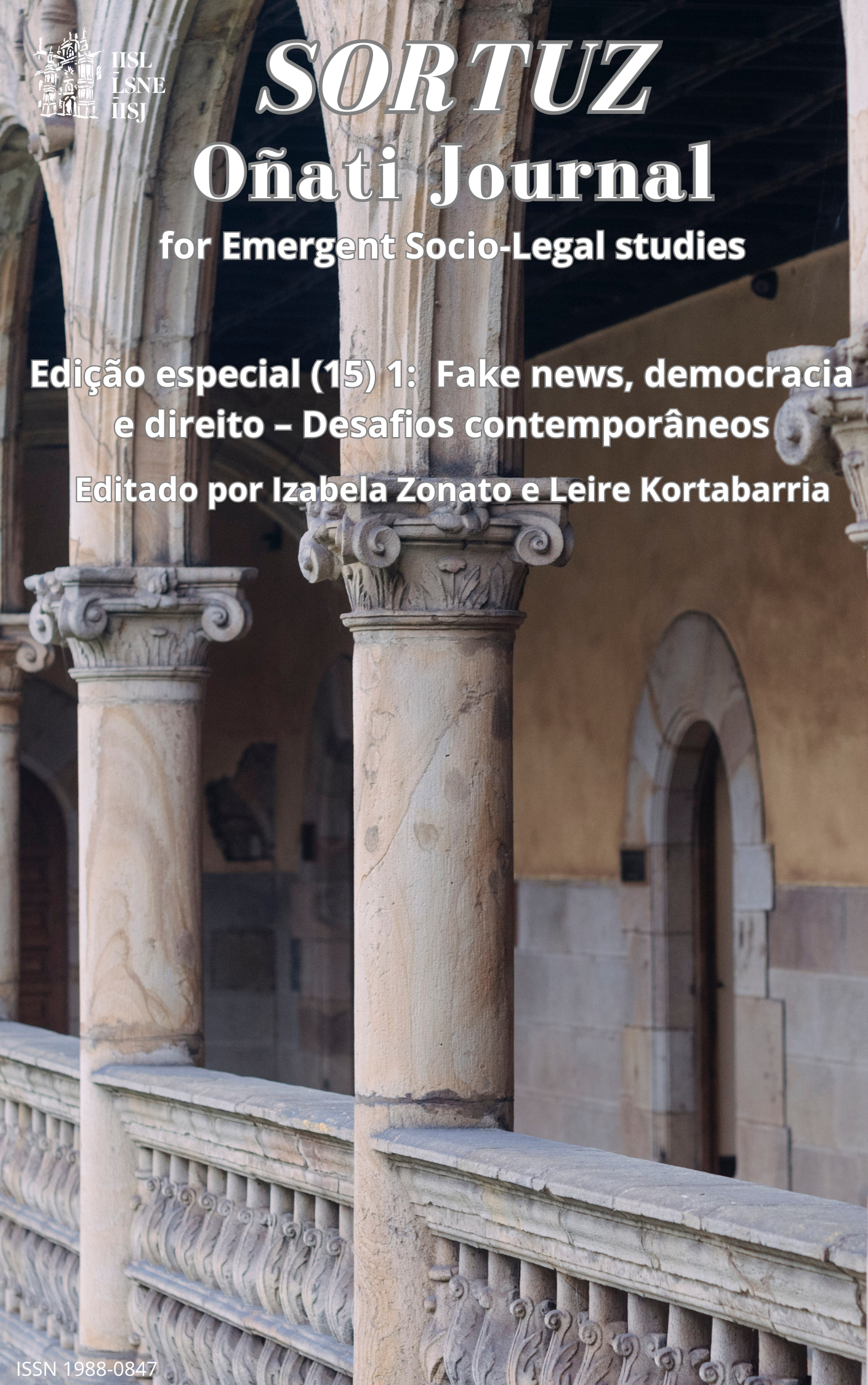Indigenous peoples of Brazil and Japan
Common material foundations for the laws of indigenous acculturation
DOI:
https://doi.org/10.35295/sz.iisl/2167Keywords:
International Law, Comparative Law, indigenous peoples, Brazil, JapanAbstract
This study compares the assimilation policies adopted by Japan towards the Ainu people with similar policies implemented by Brazil towards indigenous peoples, especially the Yanomami. Although Brazil and Japan are separated by vast geographical distances and have distinct cultural histories, both countries share similar experiences in their treatment of indigenous peoples. The comparative analysis of these experiences reveals common patterns of assimilation and acculturation, highlighting how norms were used to promote the forced incorporation of indigenous peoples into dominant cultures, resulting in significant impacts on the social and cultural dynamics of both nations.
Downloads
Global Statistics ℹ️
|
392
Views
|
230
Downloads
|
|
622
Total
|
|
References
Ainu Association of Hokkaido [online]. Disponível em: https://www.ainu-assn.or.jp/english/history.html.
Alamino, F.N.P., e Pires, M.A.D., 2021. Direito Indígena: breve estudo de sua proteção nacional e internacional. Diké: Revista Jurídica do Curso de Direito da UESC [online], 18(1), 176-203. Disponível em: https://doi.org/10.36113/dike.18.2021.2793
Albert, B., 1993. O massacre dos Yanomami de Haximu. Instituto Socioambiental. [online]. Disponível em: https://acervo.socioambiental.org/sites/default/files/documents/YAD00301.pdf
Azevedo, T., 1976. Catequese e aculturação. Em: E. Schaden, org., Leituras de etnologia brasileira. São Paulo: Nacional.
Batchelor, J., 1905. Ainu-English-Japanese Dictionary. Tokio: Methodist Publishing House.
Bugaeva, A., 2016. Toward New Horizons in Ainu Studies: Research Activities of the NINJAL-based Ainu Research Group. Tokyo University of Foreign Studies International Japanese Studies Report I, 122-136.
Chauí, M., 2006. O que é Ideologia. São Paulo: Brasiliense.
Comissão Nacional da Verdade, 2014. Relatório: textos temáticos. Brasília: CNV.
Cornell, J., 1964. Ainu Assimilation and Cultural Extinction: Acculturation Policy in Hokkaido. Ethnology, 3(3), 287-304.
Fernandes, N.M., 2013. A política cultural à época da ditadura militar. Contemporânea [online], 3(1), 173-192. Disponível em: https://www.contemporanea.ufscar.br/index.php/contemporanea/article/view/124
Fillmore, M., 1853. Letter to the Emperor of Japan, presented by Commodore Perry on July 14, 1853 [online]. Disponível em: https://visualizingcultures.mit.edu/black_ships_and_samurai/presletter.html
Freyre, G., 1943. Casa-grande e senzala. Rio de Janeiro: Maia & Schmidt.
Friday, K.F., 1997. Pushing beyond the Pale: The Yamato Conquest of the Emishi and Northern Japan. The Society of Japanese Studies, Journal of Japanese Studies, 23(1), 1-24.
Godefroy, N., 2018. The Ainu assimilation policies during the Meiji period and the acculturation of Hokkaidô’s indigenous people. Anais do simpósio Identidade Linguística e Cultural no Japão, Centro de Estudos Japoneses da Universidade de Bucareste.
Heinrich, P., 2012. The Linguistic Assimilation of Ryukyuans and Ainu. Em: P. Heinrich,The Making of Monolingual Japan: Language Ideology and Japanese Modernity. Bristol: Blue Ridge Summit, 83-106.
Hobsbawn. E., e Ranger, T., eds., 1997. A invenção das tradições. Trad.: C.C. Cavalcante. 4ª ed. São Paulo: Paz e Terra S/A.
Iwaya, E., 1893. Ainu kyoiku no hoho. Tokio: Myokei-kai Zasshi, 128, 5-18.
Lambright, B., 2022. The Ainu, Meiji Era politics, and its lasting impacts: a historical analysis of racialization, colonization, and the creation of State and identity in relation to Ainu-Japanese history. History summer fellows [online], 18(1), 1-44. Disponível em: https://digitalcommons.ursinus.edu/history_sum/18/
Lemos, H.F., e Ribeiro, M.S., 2018. A inserção do Japão no sistema internacional durante os períodos Edo e Meiji. Boletim do Laboratório de Estudos Asiáticos da UFRJ, 2(4), 30-36.
Lévi-Strauss, C., 2008. Antropologia Estrutural. Trad.: B. Perrone-Moisés. São Paulo: Cosac Naify.
Lima, A.C.S., 1995. Um grande cerco de paz. Poder tutelar, indianidade e formação do Estado no Brasil. Petrópolis: Vozes.
Maruyama, H., 2012. Ainu Landowners’ Struggle for Justice and the Illegitimacy of the Nibutani Dam Project in Hokkaido Japan. International Community Law Review, 14(1), 63–80.
Maruyama, H., 2013. Japan’s post-war Ainu policy. Why the Japanese Government has not recognised Ainu indigenous rights? Polar Record [online], 49(2), 204-207. Disponível em: https://doi.org/10.1017/S003224741200040X
Maruyama, H., 2014. Japan’s Policies Towards the Ainu Language and Culture with Special Reference to North Fennoscandian Sami Policies. Acta Borealia [online], 31(2), 152–175. Disponível em: https://doi.org/10.1080/08003831.2014.967980
Matsuo, E.Y., e Paula, A.B., 2021. O épico na literatura ainu: Kuture Shirka. Revista Épicas, 5(10), 97-111.
Ministério do Interior, 1968. Ministério do Interior. Relatório Figueiredo [online]. Disponível em: http://www.docvirt.com/docreader.net/DocReader.aspx?bib=museudoindio
Ministério Público Federal (MPF), 1993. Inquérito policial nº 078/93, processo 93.0000501-4 [online]. Disponível em: https://www.mpf.mp.br/rr/memorial/docs/atuacoes_de_destaque/massacre-de-haximu/93-000501-4-pedro-emiliano-garcia.pdf
Ohnuki-Tierney, E., 1981. Illness and Healing among the Sakhalin Ainu: A Symbolic Interpretation. Cambridge University Press.
Ribeiro, D., 1985. Os índios e a civilização. 2ª ed. São Paulo: Círculo do livro.
Ribeiro, D., 1995. O povo brasileiro: a formação e o sentido do Brasil. 2ª ed. São Paulo: Companhia das Letras.
Saito, S., 2015. Ainu: “homogeneous” Japan’s indigenous people. Children’s Images of Identity. Transgressions: Cultural Studies and Education, 109(1), 131-147.
Schaden, E., 1965. Aculturação indígena: ensaio sôbre fatôres e tendências da mudança cultural de tribos índias em contacto com o mundo dos brancos. Revista de Antropologia, 13(1), 3–315.
Siddle, R., 2009. The Ainu. In. Japan’s minorities: the illusion of homogeneity. Londres: Routledge.
Sjöberg, K., 1992. The return of Ainu: Cultural mobilization and practice of ethnicity in Japan. Londres: Routledge.
Takenaga, B.S., 1987. A divisão histórica japonesa. Revista de Estudos Japoneses [online], 7(1), 5–20. Disponível em: https://doi.org/10.11606/issn.2447-7125.v7i0p5-20
Tanabe, Y., 2019. A historical perspective of indigenous education policy in Japan: the case of Ainu schools. Em: O. Kortekangas, ed., Sámi Educational History in a Comparative International Perspective. Suíça: Palgrave, 207-224.
United Nations, 1983. Study of the problem of discrimination against indigenous populations (E/CN.4/Sub.2/1983/21) [online]. Economic and Social Council. Sub-Commission on Prevention of Discrimination and Protection of Minorities. Disponível em: https://www.un.org/esa/socdev/unpfii/documents/MCS_intro_1983_en.pdf
Valente, R., 2017. Os fuzis e as flechas: história de sangue e resistência indígena na ditadura. São Paulo: Companhia das Letras.
Vidal Parra, S., 2024. Os efeitos da juridificação da política indígena: tipologias e marco teórico. Sortuz [online], 14(1), 173–195. Disponível em: https://opo.iisj.net/index.php/sortuz/article/view/1819/2227
Walker, B., 2001. The Conquest of Ainu Lands: ecology and culture in Japanese expansion, 1590-1800. Berkeley: University of California Press.
Watanabe, H., 1975. Subsistence and Ecology of Northern Food Gatherers, with Special Reference to the Ainu. Em: R.B. Lee e I. DeVore, eds., Man the Hunter. Chicago: Aldine, 69-77.
Yamamoto, M., 1996. A Brief History of Japanese Official Policies of Ainu Segregation and Assimilation, with a Focus on Language Policy. St. Andrew’s University, bulletin of research institute [online], 22(1), 83-92. Disponível em: https://core.ac.uk/download/pdf/236045402.pdf
Published
How to Cite
Issue
Section
License
Copyright (c) 2025 Carlos Henrique Perini Miranda, Felipe Nicolau Pimentel Alamino

This work is licensed under a Creative Commons Attribution 4.0 International License.
Sortuz: Oñati Journal of Emergent Socio-Legal Studies provides immediate open access to all its content on the principle that making research freely available to the public supports a greater global exchange of knowledge.
All articles are published under a Creative Commons Attribution 4.0 International License.
Copyright and publishing rights are held by the authors of the articles. We do, however, kindly ask for later publications to indicate Sortuz as the original source.

















